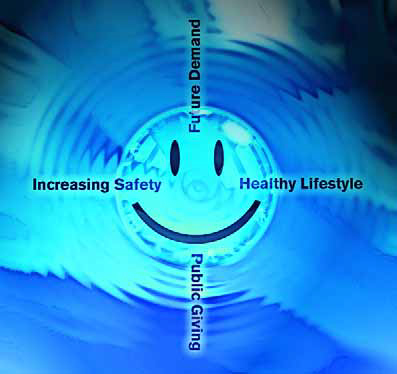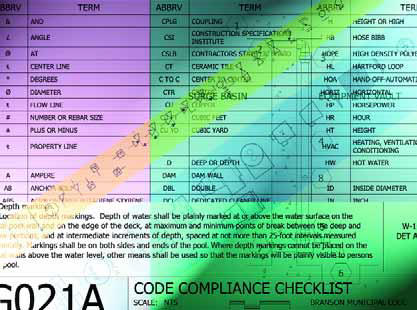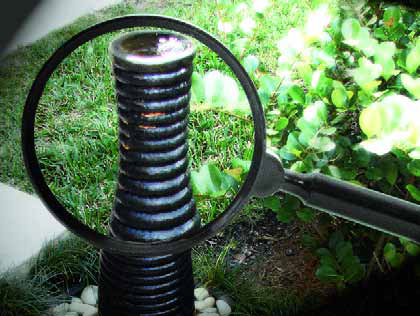ARTICLES
Advance Search
Aquatic Health
Aquatic Health, Fitness & Safety
Around the Internet
Aquatic Culture
Aquatic Technology
Artful Endeavors
Celebrity Corner
Life Aquatic
Must-See Watershapes
People with Cameras
Watershapes in the Headlines
Art/Architectural History
Book & Media Reviews
Commentaries, Interviews & Profiles
Concrete Science
Environment
Fountains
Geotechnical
Join the Dialogue
Landscape, Plants, Hardscape & Decks
Lighter Side
Ripples
Test Your Knowledge
The Aquatic Quiz
Other Waterfeatures (from birdbaths to lakes)
Outdoor Living, Fire Features, Amenities & Lighting
Plants
Ponds, Streams & Waterfalls
Pools & Spas
Professional Watershaping
Structures (Editor's Notes)
Travelogues & History
Water Chemistry
WaterShapes TV
WaterShapes World Blog
Web Links
Around the Internet
Aquatic Culture
Aquatic Technology
Artful Endeavors
Celebrity Corner
Life Aquatic
Must-See Watershapes
People with Cameras
Watershapes in the Headlines
One of the greatest epiphanies I’ve ever had as a watershaper came many years ago when I was asked to tell a group of businesspeople what I did for a living. I’d been invited to attend a meeting of the Miami Chamber of Commerce and, as a newcomer, was asked to say a few words about my company and my work. I was to go second: The first speaker was in the carpet-cleaning business and, as I recall vividly, described what he did in such a way that it would’ve been a great cure for insomnia. Standing up after his sleep-inducing performance, I was
I’ve always enjoyed spotting trends in watershaping, and I think I’ve found another that bears mentioning. This one first caught my eye on my daily walks through the neighborhood surrounding my home in Laguna Beach, Calif. I’ve always reveled in the creativity homeowners in this upscale seaside enclave apply in detailing their properties. Better still, it’s a place where no two homes are the same and almost everyone takes
Advances in fountain technology have defined a new class of animated watershapes that is not only more sophisticated but is also becoming more readily available. Here, Simon Gardiner of Crystal Fountains shares a pair of projects to illustrate how just two of these technologies – that is, submersible LED lighting and systems that make water dance – are helping his company and others bring fresh excitement to watershapes worldwide. The international fountain business is an exciting, highly competitive and ever-challenging field, basically because the clients are as distinctive as the projects they commission, the settings they provide and the countries they represent. At Crystal Fountains (Toronto), we’ve staked our reputation in the global marketplace on understanding those distinctions and built our competitive edge on keeping up with technological developments that help us animate spaces with water. The reason this constant forward progress in technology is so critical is that there’s a persistent, ongoing
Oftentimes, I end up wanting to use irregularly shaped or large, dimensional stones as a coping for my clients’ pools and as a veneer in finishing their decks. I know in doing so, of course, that the deck and its stone veneer must be isolated from the pool structure and the coping. I also know, of course, that random or dimensional stone generally doesn’t conveniently follow the isolation joint around the back edge of the bond beam. Nor, for that matter, will the stone pieces used in the deck align with
I’ve spent some time in the past couple months looking for a good book about trust. I ran into some stinkers along the way, with many of them impressing me with how boring and preachy they could be. But I never had that kind of reaction to The Little Teal Book of Trust by Jeffrey Gitomer (Pearson Education, 2008): I’m a big fan of his (you may recall that I wrote about his Little Red Book of Selling in March 2008) and have always liked the way he manages to
As is true of many business sectors, the architecture, engineering and construction industry (commonly and conveniently abbreviated as A/E/C) has its own language – and the construction documents generated by those professionals (watershapers very definitely included) are the medium through which everyone communicates. The challenge for watershapers is that we’ve come to the table a bit later than
If you’ve ever spent time in the hospital, you’re probably like me in having done your best to forget the experience. Not only were you recovering from some sort of serious injury or illness (or visiting a loved one who was), but you also had to endure the process in an environment that wasn’t quite hospitable. Most likely the room you or your loved one occupied was filled by an adjustable bed surrounded by beeping instruments. The walls were putty-white and scuffed, a couple of cellblock-like doors led to the bathroom and hallway – and a worn-out television hung questionably above the bed, threatening to
One of the clearest trends I’ve seen in watershaping through the past few years involves the use of water in the front spaces of properties, usually along a driveway or close to the main entrance. It’s something I’ve noticed on both the residential and commercial sides of the business, and these projects really do seem to be gaining traction as more time passes. In some cases, they might be the only watershape you’ll find on site. In others, they introduce a presence of water to be echoed
More than ever, the Internet is shaping the way we communicate and run our businesses. As I’ve mentioned previously, this why we’ve been working for a year now to enhance watershapes.com, backing the magazine up with resources and features designed to give you




















